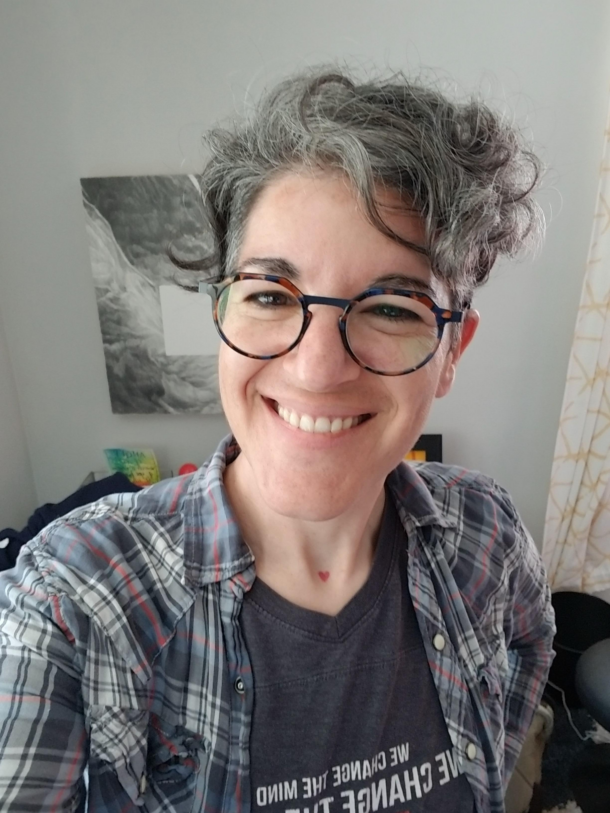Once, when I lived deep in the countryside, an ailing skunk showed up in our driveway. Rabies, distemper, who knows. All I do know is that for the fullness of a day, it walked one great big circle that included the top of our driveway and the close edge of the cow pasture beyond.
That’s how I see the geography of my lifetime so far. I’ve been traveling in a slow circle that has stayed within a two-hour drive of my hometown, hooked not by incapacity but, rather, the gravitational pull of my family there.
I have loved where I have lived – every place I have lived – and I haven’t felt particularly attached to any of the places.
Perhaps spurred by the increase of land acknowledgments during the early days of the pandemic, I began wondering if my detached appreciation of where I live has to do with something older and deeper, something to do with the reality that I wasn’t evolved for this land or this place. This land and I, we work together well but we’re not of one another.
So where am I of?
Like most people who call themselves Americans, I am a newbie to these shores, at least when I look at a longer timeline, a heritage-rooted timeline. My family came to this land recently enough that those with Eastern European accents still live in the memories of my parents. I even remember one of my great-grandparents, not her accent but the way she’d pinch my cheek and say shayna punim!, Yiddish for pretty face.
Does that make Eastern Europe the land that would feel like home to me?
Jewish people, we are historically, for thousands of years now, people of diaspora – so much so that I was well into my adulthood before I realized that was a word, an experience, that describes so many people, not just us, that describes, arguably, almost all people if you want to trace back to the earliest humans 550,000 to 750,000 years ago. And so would Eastern Europe feel like another Greensboro, another Floyd, another Roanoke? Another place that is nice to be but not in my bones?
My friend, Anela Seliskar Barboza, was raised in California and spent a good chunk of her adulthood in Minnesota, a displacement from her Hawaiian/Asian-Pacific Islander heritage that led her more deeply into her exploration of roots and place – an exploration that has been intellectual, spiritual, experiential, and all sorts of emotional.
Two years ago, she moved home to Hawaii, into a house built by and for her family, and has found there a different kind of learning curve, one that her body sometimes informs through intuition and instinct, and others that her mind continues to turn over, especially what it means to continue to find herself in predominately-white spaces, being asked to represent for all BIPOC, and what it means to be home and feel a blend of comfort and, still, a continued sense of being somehow other.
You can listen or watch our brief and rich conversation here:
Key moments in the conversation include…
…how Anela describes herself as a human:
- Humaning in progress, constantly working to arrive in a basic outline while leaving room for growth
- Someone exploring how all the versions of self can coalesce into one form
- A multi-racial person of color with mixed ancestry and deeply rooted in her Hawaiian heritage, raised on the assimilated mainland
…what Anela is all up in:
- Two years into coming home to Hawaii and noticing who she is in this context that she’s craved for so long – including the logistics of moving and making home of a place and the intuitive/instinctive acts of connecting with place
- Navigating being invited into rooms exploring diversity while having to confront Model Minority biases and the desires of those in power for her to be somehow responsible for their emotions – to provide more in the form of soothing rather than growth-oriented challenging
- Growing a business that is inherently inseparable from Anela as a person while also experiencing the exhaustion of being in primarily white, cis-gender, heteronormative spaces
- Finding rest in community, with people who welcome her unmasked self
- Living at a time when the Hawaiian language is being revived and, along with it, the oral history of that part of her heritage
…her tools include:
- Learning, in academic settings but also farther afield, particularly experiential learning
- The longitudinal view of her heritage, into and before Hawaii
- Being in a place where her brown skin is more “normal,” a place where her nervous system can settle more fully than when she was living on the American continent
…the non-profit she chose to highlight was:
Learn the land you’re on, who the indigenous people are who lived on the land before colonization, where they are now, and how you might serve them even in some small way. (I used this website years ago to discover that I live and work on Tutelo land.)
